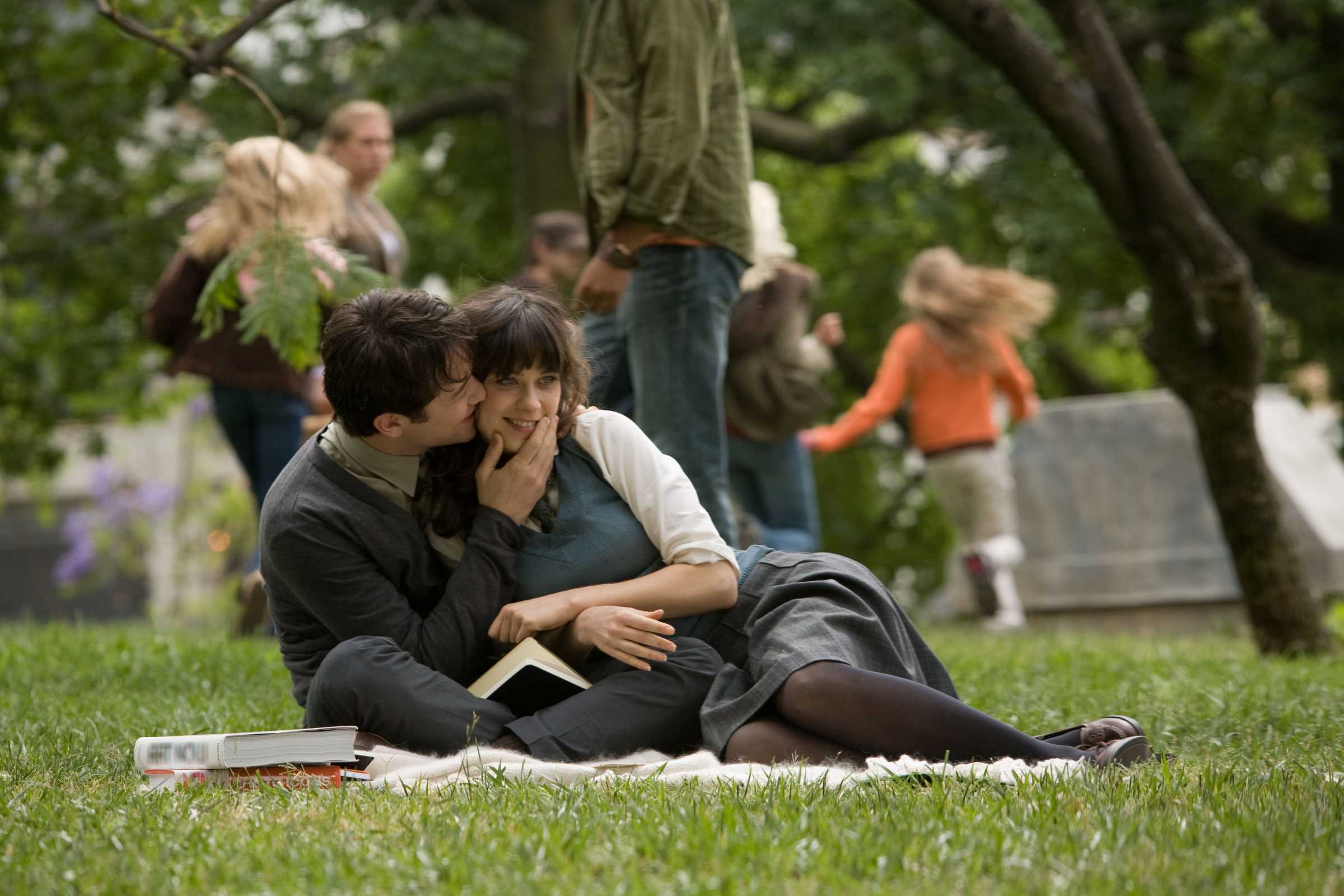Although Meg Ryan has been in over 40 motion pictures, her career to date has largely been defined by her starring roles in three huge romantic comedy hits – When Harry Met Sally, Sleepless in Seattle & You’ve Got Mail – films so successful that everyone knows what you mean if you call something a Meg Ryan movie, even if Ryan is nowhere to be found in the credits. Although these films have made her a ton of money, this is too bad in the sense that Ryan is a brave and sometimes terrific actress whose career has been stunted by the typecasting of these films. But it’s been 11 years since Mail came out, 20 since Sally. When Nora Ephron, who wrote all three Meg Ryan superhits & directed the last two, was casting for Julie & Julia, she didn’t think of the 5’8” Ryan to play the 6' Julia Child, turning instead to the 5’6” Meryl Streep.
But somebody decided to release a Meg Ryan movie this summer, most likely producer/director Mark Waters, who appears to have developed (500) Days of Summer as a vehicle to promote the careers of director Marc Webb and actors Zooey Deschanel (you can catch her singing about how cotton is “the fabric of our lives” on TV these days) & Joseph Gordon-Levitt (the one-time child actor who played Tommy on 3rd Rock from the Sun). The only thing that's missing is Meg Ryan. This film, which could have been called When Sally Dumped Harry, so closely follows the Ephron formula that instead of Ryan faking an orgasm over lunch in a coffee shop, we have Deschanel & Gordon-Levitt hollering penis in a park.
The film’s claim to creativity lies in the premise underlying the parentheses around the number in the film’s title, Summer being the name of Deschanel’s character. The film jumps around the not-quite-17-months relationship from the day when Tom (the name of Gordon-Levitt’s role & the closest he will ever come to being mistaken for Mr. Hanks) first meets Summer until the day when the page finally turns on this affair & he meets a young lady named – you got it – Autumn. Each scene is preceded by an intertitle, the number of the day in the relationship in parens. This gives the film a hopping, happening-like feel that probably would seem fresher to me if I hadn’t seen effects like this for 40 years or more. But it is one way to tell a story to an audience with no attention span or one that might begin to get bored by the film’s clichés if it stretched out in chronological order. Just to keep it from being avant-garde or anything, there is a narrator (veteran voice actor Richard McGonagle) to keep us on track. That’s just one of a hundred ways this film holds back from doing anything too terribly risky with its material (the one “nude” scene is shot so close that Deschanel’s naked shoulder is blurred out of focus & we see just enough of her back to get the idea).
The narrative of this film is built around the idea that Tom, trained as an architect but unable to find work in his field & wasting his youth writing greeting cards¹, is a romantic & believes that there is One Right Girl in the world for him. Tom talks about the One as if he’s stolen his lines from The Matrix. Summer, traumatized by the divorce of her parents during her childhood, is an anti-romantic. She’s in it, it being the relationship, because it feels nice, it feels right, at least right now. He’s cute, he’s willing to sing karaoke & have sex in the shower – a funny & very chaste little parody of a Hollywood stereotype there. But she’s not making a commitment.
At least until she does, but not to Tom, who at least uses the break-up to wake up from his funk at not being a real architect in a town of not-real architecture (LA). He quits his job and starts taking his portfolio out on interviews – that’s our happy ending, give or take. A more serious or thoughtful film might have looked at Tom’s lack of commitment to his career more carefully. Or set it in Chicago where they really could have explored the architectural visuals. The closest (500) comes to a real investigation of this is a short discussion of Los Angeles’ first skyscraper, looking rather short & forlorn amidst the multistory parking garages of the landscape. As the camera moves from the skyscraper to Tom & Summer, we can see John Portman’s Westin Bonaventure fuzzy in the background as if to say “we’ll talk architecture, but we won’t really talk it seriously.” That knowing wink, for me, was the best moment in the entire film.
A more interesting (and far better) romantic comedy to compare (500) with would be Once, the Irish musical about a busker & an immigrant girl who’s not willing to commit to a relationship because she knows (or at least hopes) that the father of her child will be joining her in Dublin. This too helps provoke the hero to take his career to another level, cutting a demo disc & heading off to London in hopes of making it big. The characters in Once feel real & their chemistry on screen is amazing – they did in fact get together for awhile after the film took off & won an Oscar for best song. The characters in (500) feel like they’re playing Meg & Tom, or maybe Meg & Billy (but mostly Tom) & while they’re both attractive & likeable & have okay chemistry, it’s romance by the numbers here & Nora Ephron did it better.
¹ Iowa City grads who’ve trooped down to Kansas City to work for Hallmark, please take note.






